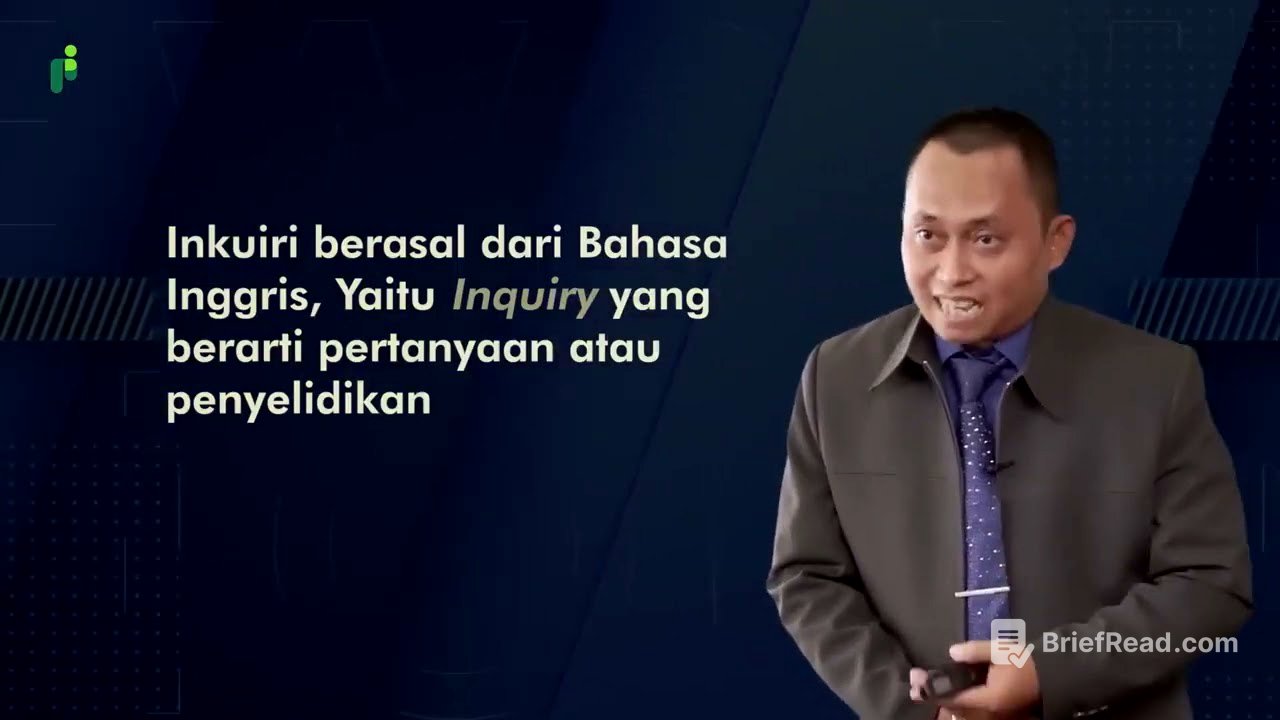TLDR;
This video explains several learning models commonly used in the K13 curriculum and relevant to the Merdeka Belajar curriculum. It details the syntax, steps, and characteristics of problem-based learning (PBL), project-based learning (PJBL), discovery learning, and inquiry learning. The video emphasizes the importance of understanding these models for effective implementation in the classroom, highlighting the differences between discovery and inquiry learning, where discovery learning involves teacher-engineered problems, while inquiry learning encourages students to find problems through research.
- Problem-Based Learning (PBL): Stimulates learning through real-life problems, focusing on students identifying learning issues and finding relevant materials.
- Project-Based Learning (PJBL): Focuses on complex problems, collaborative investigations, and project creation, integrating subjects within the curriculum.
- Discovery Learning: Provides opportunities for students to find problems and solutions through self-collected and processed information.
- Inquiry Learning: Involves students in systematic and critical investigations, formulating their own findings with the teacher as a director and facilitator.
Introduction to Learning Models [0:08]
The video introduces a discussion on learning models, particularly those familiar within the K13 curriculum. It sets the stage for dissecting the syntax of various learning models, with a focus on problem-based learning (PBL), project-based learning (PJBL), discovery learning, and inquiry learning. The presenter emphasizes the importance of understanding these models for effective implementation in educational settings.
Problem-Based Learning (PBL) [1:10]
Problem-based learning (PBL) aims to stimulate students by presenting them with real-world problems related to the knowledge they have or will learn. The problems in PBL require students to explain phenomena, identify their own learning issues, and find relevant materials or concepts to solve these problems. The five steps in PBL include problem orientation, organizing learning activities, guiding independent and group investigations, developing and presenting the results, and analyzing and evaluating the problem-solving process.
Project-Based Learning (PJBL) [2:37]
Project-based learning (PJBL) is aimed at learners who focus on complex problems that students need to understand through collaborative experimental investigations in creating a project and integrating it as a subject or material in the curriculum. The steps for PJBL involve preparing questions or project assignments, designing project planning, preparing a schedule, monitoring project activities and developments, testing the results of facts and experimental data or research, and evaluating the activities or experiences of the project.
Discovery Learning [4:00]
Discovery learning provides an opportunity for students to find out about a problem and find a solution based on the results of processing the information they themselves are looking for and collecting. This approach allows students to develop new knowledge that can be used in solving relevant problems. The steps in discovery learning include providing stimulus, identifying problems, collecting data, processing data, and verification.
Inquiry Learning [5:20]
Inquiry learning involves a series of learning activities that maximize students' abilities to search and investigate systematically and critically. This approach helps students formulate their own findings with confidence. The role of the teacher is as a director and a source of information. The syntax of inquiry includes observing phenomena, asking questions, forming hypotheses, collecting data, and formulating conclusions based on analyzed data, which students then present.
Differences Between Discovery and Inquiry Learning [7:24]
The video highlights the distinction between discovery and inquiry learning. In discovery learning, the problems are engineered by the teacher, who also acts as a guide. In contrast, inquiry learning involves problems that are not teacher-engineered, encouraging students to use their thoughts and skills to find solutions through research. In inquiry learning, the teacher acts as a moderator or facilitator.
Conclusion and Application to Merdeka Belajar Curriculum [8:15]
The video concludes by summarizing the understanding of the characteristics and models of learning and how to implement them in the Merdeka Belajar curriculum. It emphasizes the importance of understanding differentiated learning, which is a characteristic of IKM (Implementasi Kurikulum Merdeka). The presenter thanks the audience and announces that they will meet again in the next video to share more.
